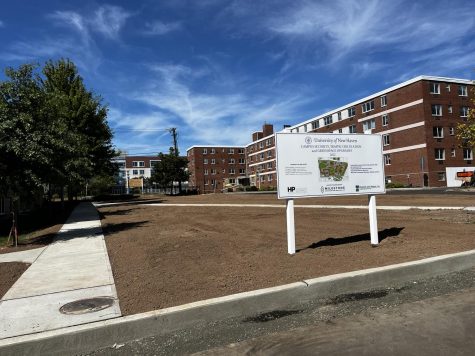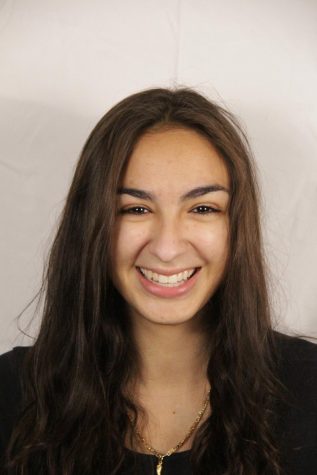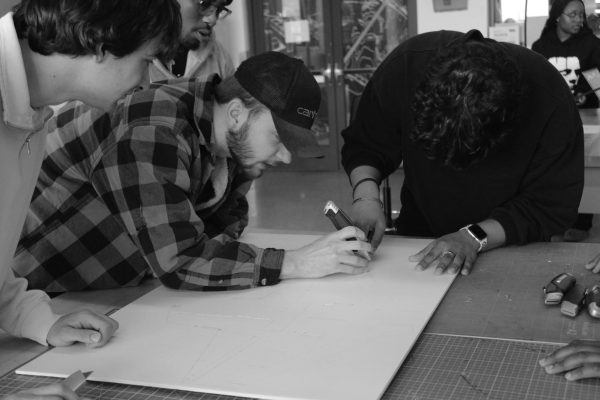University undergoes parking remodeling before fall semester
The former parking lot outside of Dunham Hall under construction, West Haven, June 21, 2022.
Following recent construction, certain parts of campus–especially its residential side–are taking a new shape. Most of this construction is set to be completed prior to student move-in at the end of this month.
As the semester starts, students will return to find that the parking lot in front of Winchester Hall is now a large plot of empty land. A sign placed in front of the vacancy outlines new plans for the renovation.
One such plan is called “New Quad/Greenspace” that will consume the intersection of Winchester, Sheffield and Dunham Halls, making what was previously the Winchester parking lot the fifth quad space on campus.
These displayed plans also indicate the addition of security measures placed across numerous entrances to main campus.
A new circulation of traffic in the Westside/Dunham region is also under way.
The student body voiced their disapproval upon information being leaked on social media about these renovation plans. This was the first time that the students have been made aware of any active changes on campus.
Associate Vice President of Facilities Louis Annino clarified the current alterations being made to campus.
The source of all of the changes being made this summer can be traced back to 10 years ago, which is when Anino said that the university began a master plan in order to “help the leadership of the university make decisions so that they can achieve an overall objective in terms of space planning long term.”
To explain the manifestation of these investment plans, Anino said the overlap between increased security measures and plans surrounding the direction in which the university is taking the parking scene.
Annino said that there was a “goal to move parking towards the campus perimeter,” which began when the Bergami Center for Science and Technology was constructed, in 2020. This led to relocating parking to the Hoffman Street and Westside Hall lots. Along the timeline of the Bergami Center construction, the project called for a surplus of parking in anticipation for other future projects. He said that such measures sought to “retain surface parking for commuters and students,” such as those that have taken place this summer.
Julie Carbonella, director of operations of Public Safety and Administrative Services, confirmed that the construction from this past summer cost the university a net “30 spaces lost from main campus” but also said that “we now allow commuters to park at the Hoffman Street lot. There’s always plenty of commuter spaces, it’s just a matter of students wanting to park on the main campus.”
Annino also addressed student concerns about parking, saying that the “total number of parking spaces have not decreased as a result of this, and they have actually increased in different places,” such as the recent allowance for commuter students to park on the Hoffman Street lot.
Both Annino and Carbonella spoke on the university’s motion towards a “building for success project to produce more green space on campus,” as Carbonella said.
Annino spoke on the need for compromise when seeking to build a better living community for students to interact with on a daily basis. He said the goal in creating more green space was to create “casual student recreation” and proper spaces for students to reside in.
On a final note in the direction of parking, he also spoke on the understanding that students were posing questions about more structured parking, such as a parking garage––something of which he said that they are contemplating, but do not see a current need for yet. In the event that they do elect to add such parking facilities, Annino said they “likely would not be in the center of the campus, as it would impede on our ability to create the green space” and instead would be on external sectors of campus property.

Wesley Matteson, junior paramedicine student, is one of many who feel that the university is painting an image of negligence towards the commuter population. He called it “ridiculous” that the university “has such high expectations when it comes to its commuter students, however they’re always the last thought of the university leadership team.”
Matteson also mentioned the prior construction of the Bergami Center, which was completed just a few years prior, and was also notably constructed over a commuter parking lot, as was also discussed by Annino.
Senior criminal justice major Shadh Omar is a commuter student on campus who voiced similar concerns about the potential reduction of parking available to students who drive to campus every day. She said,“as a commuter student, parking is one of the worst things on campus. Sometimes I’ll drive for 10 minutes trying to find parking.”
In response, Annino said the sacrifices being made on campus for “more safeguards to protect those that live here” should be understood by students who may have to park a “modest walk” away from academic buildings, as opposed to directly on the main campus. He also reinforced the idea that prior remodeling to campus created a surplus in parking to cover for the changes of today, but said no more towards student concerns.
Shifting back to the residential side of campus, Annino transitioned to draw lineage between the security missions this summer to the shifting parking zones. As aforementioned, the circulation in the Westside/Dunham region is being redirected. He said “when the security project came along, since we had to change the traffic circulation in that area and built the parking to support that, now was the time to build the green too.”
Looking at the broader picture, Annino said the “overall objective is to be able to secure main campus during off hours.”
He said that right now we are a “fairly permeable campus” with a number of open access points, and listed them off as two at the German Club, three off Ruden Street, one at the Peterson Library, and are considering another at the Maxcy parking lot.
In an effort to secure and control these points better, a number of security additions are being made to campus. According to Annino, these changes should be installed around October, following remaining delays from COVID-19 backup.
The new aim is to redirect all after-hours Ruden Street traffic through the Westside security gate. This would eliminate the entrance between Westside and Dunham halls, which would also create a number of new commuter parking lots, notably.
Gating at the entrance to the Celentano lot is complicated, Annino said, given the way that it would back up traffic into Ruden Street. As a result, the solution is to install an automated gate, which would be opened by university police and administration at the times of major events, and would remain closed most of the time to reduce entry points to campus.
Other proposed security measures are also mapped out on the display, one of such being a guard station at the library parking lot, and another being a vehicle control gate behind Maxcy Hall near Anemone and Stephen Kaplan Hall.
The Peterson Library parking lot, with the addition of a guard booth, would act as a deterrent for people trying to enter campus without permission.
The Maxcy parking lot is looking to see the addition of another bar gate that will be keycard regulated.
At the German Club lot, an automated swing metal gate will be open during the day and closed at night.

Mia Adduci is a senior studying communication concentrating in multi-platform journalism and media who began writing for the paper her first semester on...











